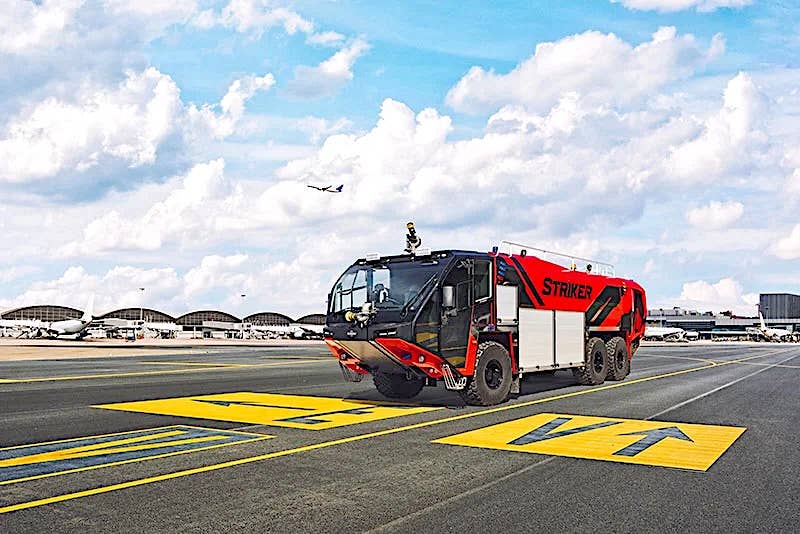Leading Edge #23: Stabilized Approaches in Light Airplanes
Stabilized approaches aren’t just for the Jet-A club. AVweb‘s Thomas P. Turner suggests ways to make them work for piston-pounders.
One of the hardest parts of flying instruments is making the transition from on-the-gauges to visual flight at the missed approach point. Visual and instrument pilots also have difficulty at times landing in the proper touchdown zone because they're too fast or too slow on final. One way to make safe, consistent landings, and to fly to tighter instrument tolerances, is to fly a stabilized approach ... modified for the realities of flying light airplanes.
What's a Stabilized Approach?
We hear the term a lot, but it's not precisely clear what is meant by a "stabilized approach." The strict definition of a stabilized approach is somewhat elusive; most educational materials focus more on what is not "stabilized" than what is. For example, the Flight Safety Foundation's (FSF) Approach and Landing Accident Reduction (ALAR) Briefing Note 7.1 -- Stabilzed Approach(65 KB PDF) nods to the fact that "stabilized" means different things to different operators, saying,
An approach is stabilized only if all the criteria in company standard operating procedures (SOPs) are met before or when reaching the applicable minimum stabilization height.
FSF's Briefing Note calls unstabilized approaches those "conducted either low/slow or high/fast." It provides a recommendation that the airplane be stabilized within 1000 feet of the ground in IMC or 500 agl in VMC. FSF cites unstabilized approaches as being a "causal factor in 66 percent of 76 approach-and-landing accidents and serious incidents worldwide in 1984 through 1997." The airline pilot chat lines -- filled with commentary by pilots whose work evaluations hinge on whether an approach is stabilized -- show that even the pros are confused about what the term means.
A stabilized approach to most pilots means something that looks like the figure at right. The aircraft is put into landing configuration (gear down and flaps set) prior to reaching the let-down point (final approach fix or leaving the traffic pattern altitude), and airspeed is reduced to VREF or some target just above VREF. When time comes to descend, the pilot flying (we're talking primarily large, turbine airplanes here) adjusts attitude and power to establish a descent while maintaining airspeed. The aircraft is flown in this configuration and attitude all the way to touchdown (no wonder airliners often have such "firm" arrivals). Although this technique may be desirable in turbine airplanes, small airplanes don't fly like large, jet transports. And weren't we taught something about a "round-out" and flare that is more appropriate in light aircraft?
A Better Approach
The FAA's Airplane Flying Handbook(AFH) provides this definition of the stabilized approach:
A stabilized approach is one in which the pilot establishes and maintains a constant-angle glidepath towards a predetermined point on the landing runway ... the point on the ground at which, if the airplane maintained a constant glidepath and was not flared for landing, it would strike the ground.
Aha! The AFH is giving us a different concept of what it means to be "stabilized." This is not a criticism of airline operations or the stabilized approach concept -- as we'll see in a moment, it saves lives -- but instead points out that the concept as commonly described does not apply directly to flying light airplanes. AFH's Figure 8-9 (below) shows how an approach may be flown stabilized to the point where the flare begins.
 Airplane Flying Handbook Figure 8-9
Airplane Flying Handbook Figure 8-9Why Everyone Talks About Stabilized Approaches
Airline-style or lightplane-appropriate, why does everyone talk about stabilized approaches? The concept evolved to meet these goals:
- Predicting aircraft performance by using the same technique every time;
- Increasing situational awareness by allowing the pilot to focus on instrument or outside references, as appropriate to conditions, instead of diverting attention to changing trim, power and configuration settings during final approach;
- More easily detecting and correcting for glidepath deviations;
- Increased ability to establish crosswind corrections; and
- Landing in the touchdown zone at the proper speed to ensure landing performance.
Common accidents where a stabilized approach is notflown include controlled flight into terrain (CFIT), landing short, landing long and running off the far end of the runway, and stalls. Stabilized approaches, especially in heavy, inertia-ridden transport aircraft, save lives. Notice that these causalities are related to distraction and improper airspeed control -- two things a stabilized approach are designed to avoid. The stabilized-approach philosophy in airline operations appears to have saved lives.
Stabilized Approaches In Light Airplanes
So how can we gain the benefits of the stabilized approach concept while flying with the characteristics of light airplanes? First, consider that the goal is to arrive at a known position relative to the touchdown zone while at a known configuration and airspeed. We want to be established in the known configuration and on that known airspeed in time to reach that final, known position where the flare begins. Instrument Approaches: On an instrument approach, fly in a stabilized condition from just inside the final-approach fix (FAF) to the missed-approach point (MAP). You may decide to become stabilized outside the FAF -- the difference is primarily when you'll extend the landing gear in retractable-gear (RG) airplanes. I personally teach extending the gear at the FAF as the means of initiating final descent. So many times pilots forget to extend the landing gear, and if you're conditioned to initiate descent with a power reduction, on the day you forget the landing gear you'll have nothing to directly remind you at this point (in all fairness, almost no gear-up landings happen out of an instrument approach). You may fly a type of airplane that extends gear asymmetrically, with varying drag causing yawing motions when the gear is in transit. In such airplanes, it's probably better to extend the gear outside the FAF to be stabilized for the remainder of the approach. That's OK, too. What's more important is that you remain in a single configuration as you descend down the glidepath until you either break out to land visually or power-up to miss the approach. When "going visual" out of the approach, you'll be in a known configuration at a known speed, as well as a known (from the instrument approach procedure flown) position relative to the runway. If you have enough altitude to transition to a new, stable, visual, approach configuration, that's great. Some pilots like to maintain the configuration used for the approach all the way to landing to minimize pitch and trim changes before beginning the flare. That's fine, and may even be the best way to go if you break out right at minimums. Remember: You'll probably use more runway than in a visual landing if you use this technique. Visual Arrivals and VFR Traffic Patterns:When arriving visually, whether as part of an instrument arrival or by flying a VFR traffic pattern, aim to be stabilized on configuration and final-approach speed within about 400 to 500 feet of the ground. This is the usual height when rolling out onto final approach, unless a control tower directs a wide pattern or a straight-in approach. This is the point where I'll usually extend the last notch of flaps, confirm my gear is down (in RG airplanes), and aim for the "book" final approach speed.
The Ultimate Unstabilized Approach
Many airline pilots and GPS developers will tell you that step-down instrument approaches are patently unsafe. They fly in the face of the stabilized approach concept, because they require a power change and interrupt the constant-angle-of-descent-to-touchdown precept. Historically, airline crews have had difficulty with step-down approaches in the turbine era; the whole idea of GPS WAAS glidepaths is to do away with "dive and drive" approach profiles in the hope this will reduce CFIT accidents in all classes of airplane.
You can still think of the step-down approach as being stabilized, however, in the manner addressed in the Airplane Flying Handbook. The airplane is placed in configuration and on speed prior to reaching the FAF. A fairly big power reduction is necessary to descend to the minimum descent altitude (MDA), and power must be added to level off at MDA. The airplane is still on speed and in configuration, with power being the only variable. At the MAP the pilot must do one of two things: Reduce power, if the runway environment is in sight and a landing can be made using "normal" descent technique; or miss the approach if either of those criteria are not satisfied. However, if arriving visually, the airplane isin a predictable position relative to the runway, while at a predictable airspeed and configuration that allows a stabilized descent from there to the point where the flair begins. Viola! It's not as "unstabilized" as it seems. Even a circling instrument approach should be flown "stabilized" if we define stable as being on speed and configuration to the MAP, and then again within 400 to 500 feet of the ground when on final approach.
Semantics, or Safety?
Are we concentrating too much on a buzzword, or is a stabilized approach -- as defined for lightplane flying -- a better way to go? Flying on speed and configuration from the FAF to the MAP when in IMC makes it far less likely you'll deviate from the approach course or bust altitude. Once going visual -- or if you're making a VFR arrival -- establishing a stable final-approach speed and configuration from when about 400 to 500 feet of the ground until the point you begin your flare makes it far easier to touch down where you want at a speed that permits easily stopping on the runway. If you find you are unstabilized inbound from the FAF or within a few hundred feet of the ground when visual, miss the approach or go around and set up for a stable approach next time. Flying stabilized approaches in all classes of airplane results in smoother, easier, more passenger-friendly flight ... and more importantly, it's safe. Fly safe, and have fun!






